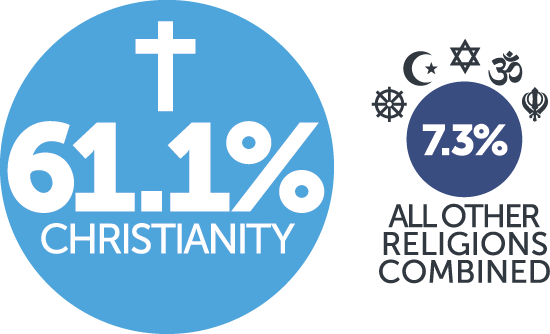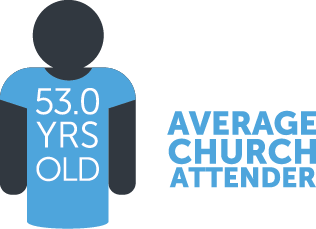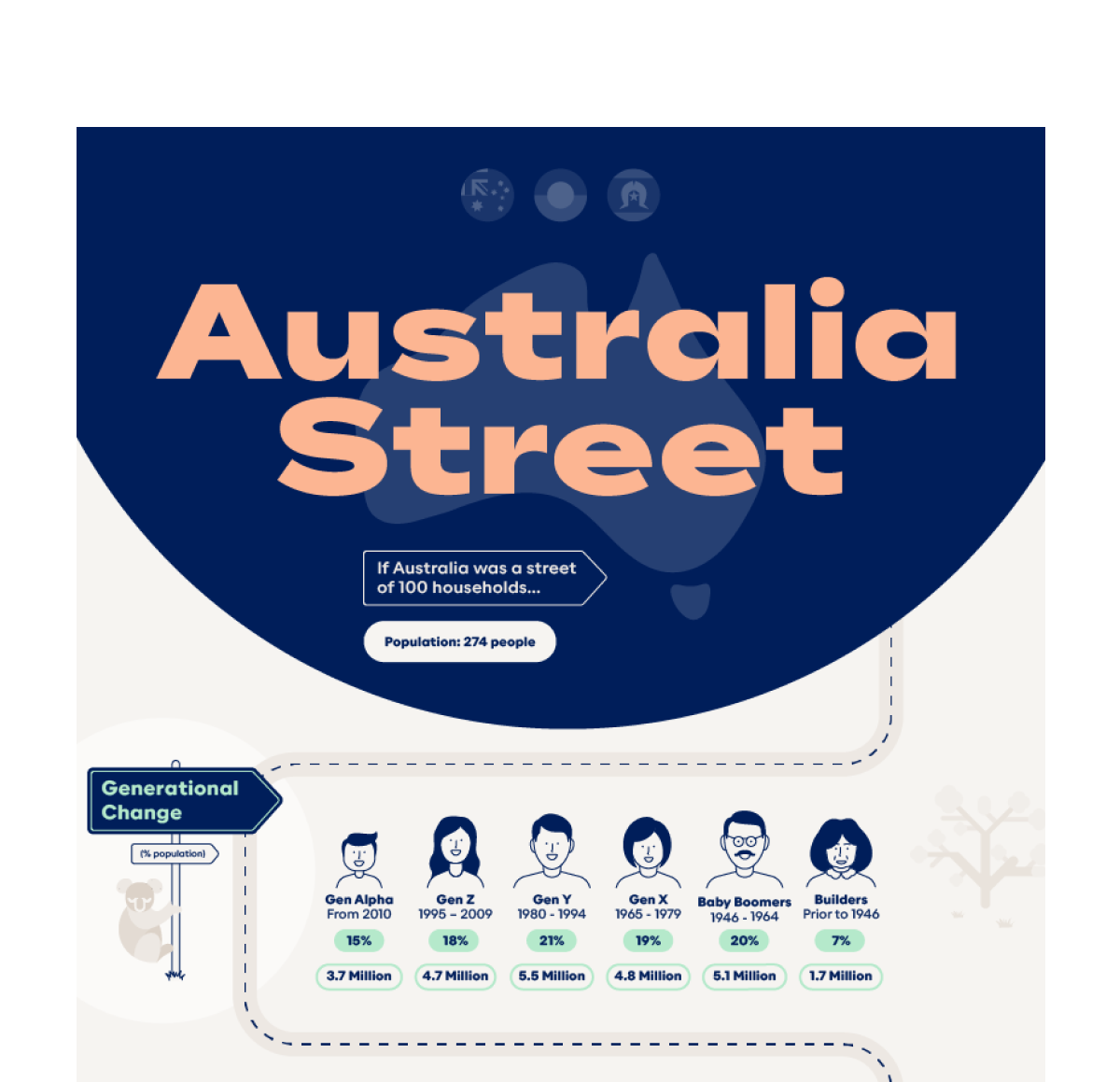A Demographic Snapshot of Christianity and Church Attenders in Australia

Steady declines:
The proportion of Australians identifying Christianity as their religion has been declining over the last century – from 96% in 1911 to 61.1% in the 2011 Census. Over the last decade, Christianity in Australia has declined from 68% to 61.1%.
Still Australia’s largest religion:

The number of Australians identifying with Christianity is more than 24 times larger than the numbers identifying with the second largest religion in Australia, Buddhism (2.5%). Indeed, the proportion of Australians identifying with Christianity as their religion is more than eight times larger than Australians identifying with all other religions combined (7.3%).
Spiritual, not religious:

Over the last four decades, the number of Australians selecting “no religion” on the Census has more than tripled from 6.7% (1971) to 22.3% (2011) of the population. However the majority selecting this response could be classified as “spiritual not religious” rather than “neither spiritual nor religious”. In the 2011 Census, only 2.2% of the “no religion” respondents indicated “atheist”, “agnostic”, “humanist” or “rationalist” as their worldview.
Church attendance declining but still significant:
National Church Life Survey (NCLS) data shows that over the last four decades the proportion of Australians attending church at least once per month has more than halved from 36% (1972) to 15% currently. However this is still a significant proportion of the Australian population and indeed twice as many Australians attend church at least once per month (3.495m) as attend all AFL, NRL, A League and Super Rugby games combined per month (1.684m) during the football season.
Church goers advocacy and public policy:
The NCLS data (2011) shows that most Christians believe that Christians should be active in public policy through making public comment on policy issues (80% support this), advocating and lobbying governments (75%), and almost two-thirds (63%) believe that the church should publically advocate on policy issues, and more than two-thirds (68.5%) believe that church goers should campaign for global poverty and injustice issues.
Church attendees ageing but new generations emerging:

Along with an ageing national population, the NCLS data shows the church going population is also ageing with an average age of adult church attenders being 53. While the 70 plus age group are strongly represented in church (comprising 12% of the population but 25% of all church attendees), the age groups under 50 are underrepresented. This divide is increasingly evident with the younger generations, for example the 20-39 year olds make up 34% of the population but just 21% of church attenders.
However the denominational grouping with the youngest church attending population is also the fastest growing denomination. Pentecostal churches had an average age of attending adults as 39 and they have a total church going population of 12% of all church goers. This means that Pentecostal churches are now the second largest denominational grouping of church attenders after Catholics (46%) and ahead of Anglicans (11%).
Find Out More
For more on understanding the emerging trends within Australian community groups and the not-for-profit sector head to Australian Communities, where you can download our full report here.
Download Christianity and Church Attenders in Australia. Click here to download the full report.





